내일의 전통, 오늘의 관객을 만나다
월간국립극장
예술 형식이 개인 및 집단의 지속 가능성에 영향을 미친다고 여기며 성장하지 않았다.
오늘날 지구상에 있는 국가와 지역은 고유한 문화적 자아를 키우기 위해 세계화의 특성인
동질화 역학에 맞서 싸워야만 한다. 나의 고향인 알래스카주 주노에 있는 명승지, 멘덴홀 빙하가
멀리 떨어진 곳의 산업 활동이 초래한 급격한 온난화로 인해 녹아내리듯,
한국의 오랜 음악 전통을 향유할 관객도 마찬가지로 우리의 사운드스케이프와 시각적 영역을 차지하는
현대 디지털 엔터테인먼트의 빠른 침투로 인해 사라지고 있다.
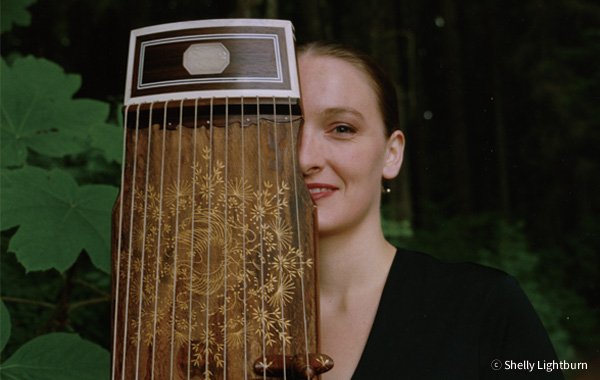
지속가능성을 우리가 살고 있는 환경과 생태계, 우리 행동이 그 생태계에 미치는 영향(오염된 식수, 미세먼지, 해수온도 상승, 딱정벌레로 인해 파괴되는 숲, 종의 멸종 등) 측면에서 생각했다면, 물론 당신만 그렇게 생각한 것이 아니겠지만 우리는 직업, 관계 및 신체 건강과 같이 우리 존재의 보다 미시적인 수준에서도 지속가능성을 열망한다. 마찬가지로, 우리가 일상에서 하는 문화적 선택이 개인 및 국가 정체성의 장기적인 회복력을 결정한다. 우리의 청취 습관이 지난해 K-팝 Hot 100보다 더 멀리 나아가지 못한다면, 과거 오랫동안 지속된 뿌리가 끊어지고 개인과 민족의 정체성에 매우 중요한 문화적 영양분을 전달할 수 없게 된다.
미국의 시각 예술가이자 시인인 이안 보이든Ian Boyden은 글을 통해 우리를 둘러싼 환경은 종종 “자아의 반영”으로 간주되지만, 우리와 주변 환경 사이의 관계는 훨씬 더 밀접하게 얽혀 있다고 말하며, “환경과 자아는 분리할 수 없습니다”라고 썼다. “우리가 바로 우리의 환경입니다. 우리가 환경에 하는 행동이 곧 우리 자신에게 하는 것입니다.” 마찬가지로 우리 각자는 우리의 문화적 환경이다. 우리가 받아들이는 것이 우리가 개인으로서 또 민족으로서 어떤 사람이 될지 운명을 결정짓는다.
최근 몇 년간 한국 전통음악계는 최초의 중요무형문화재 두 분의 탄생 100주년을 맞아 기념했다. 1921년생 가야금 병창 명인 박귀희朴貴姬 선생님과 가야금 산조의 명가이자 연주가이신 1923년생 성금연成錦鳶 선생님이다. 나는 지난 30년 동안 한국의 전통음악을 연구해 왔다. 성금연 선생님을 직접 뵐 기회는 없었지만, 운이 좋게도 1990년대 초 국립국악원에서 안숙선·강정숙 명인과 공연하던 박귀희 명창의 모습을 직접 볼 수 있었다.
관객이 무대 위의 명창과 연주가에게 함성을 보내던 그 짜릿했던 공연장의 분위기가 기억에 남는다. 당시 한국에 온 지 얼마 되지 않았기 때문에 그 분위기를 완전히 이해하지 못했지만, 나도 그 분위기에 동참하고 싶었다. 이미 센터에서 장학금을 받고 가야금을 공부하기 위해 한국에 왔지만, 다음 날 가야금 병창도 연구 프로그램에 추가해 달라고 요청했다.
1990년대 초반 처음 한국에 왔을 때는 특히 남서 지방을 중심으로 박귀희 명창을 비롯해 국악 공연이 많이 열렸다. 공연을 통해 관객과 연주자가 하나 되어 음악을 경험하는 듯했다. 지역색이 강하면서도 친숙하다는 느낌이 들었다. 온 관객이 추임새를 넣으며 그들이 알고 있는 가야금 병창의 경쾌한 장단과 복잡한 한자어에 맞춰 연주자와 함께 노래를 불렀다.
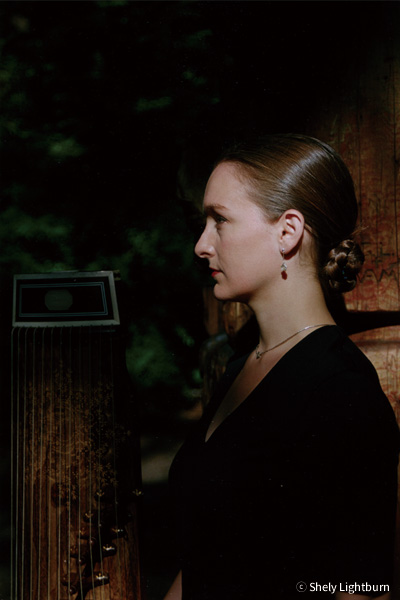
조용히 가만히 앉아서 감상하는 서양 클래식 음악회를 보고 자란 나는 근처에 있는 관객이 “얼씨구!” 소리칠 때마다 의자 위로 뛰어올라 누구인지 찾곤 했다. 드디어 직접 무대에 설 기회가 생겼을 때에서야 비로소 스승의 격려와 응원이 지닌 힘을 느낄 수 있었다. 추임새는 흥, 즉 ‘샘솟는 기쁨’의 씨앗이다.
대조적으로 요즘 공연 분위기는, 심지어 전라도 지역조차 이상하게 조용하다. 마치 미국 작가 레이첼 카슨Rachel Carson의 작품 『침묵의 봄』처럼 살충제를 뿌려 작가의 집 주위에 새들이 지저귀는 소리가 들리지 않게 된 것과 같은 현상이 아닌지 모르겠다. 사람들은 ‘그르칠까 봐’ 참여하는 것을 두려워하고, 어찌해야 할지 모른다. 이제 음악은 관객과 가깝지 않다. 내가 최근에 관람한 공연에서는 앙코르를 받고 나서야 제자들이 추임새와 함께 ‘찰나의 봄’一片春, 일편춘을 따라 불렀다.
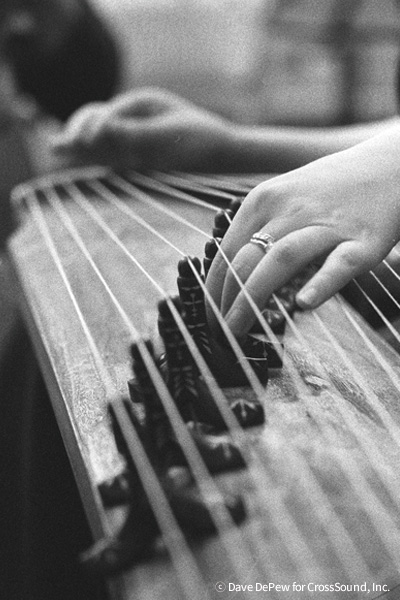
동아시아 음악을 연구하는 사람들 사이에서 가장 잘 알려진 중국 고사 중 하나는 바로 도교서 『열자列子』(장자가 종종 인용)에 담긴 춘추전국시대(기원전 약 771~476년)를 배경으로 한 백아伯牙와 종자기鍾子期의 이야기다. ‘신기비보神奇秘譜’, 말 그대로 ‘신비하고 놀라운 거문고 악보’에 다시 실린 이 이야기는 매우 짧고 간결하다.
백아는 뛰어난 거문고 연주자였다. 종자기는 거문고 소리를 잘 들었다. 백아가 높은 산을 생각하며 연주하면 종자기는 “우뚝 솟은 것이 마치 태산 같구나!”라고 말했다. 백아가 흐르는 물을 생각하며 연주하면, 종자기는 “강과 바다가 무척 광대하구나!”라고 말했다. 백아가 (연주하면서) 무슨 생각을 하든 종자기는 항상 그 마음을 이해했다. 백아는 “대단하구나! 너와 나의 마음은 통한다!”라고 말했다. 종자기가 죽자, 백아는 현을 끊고 다시는 연주하지 않겠다고 맹세했다.
이 이야기는 중국에서 (그리고 한국에서도) 매우 유명해서 이상적인 우정을 비유적으로 일컫는 말이 되었다. 중국어로는 zhiyin, 한국어로는 지음知音이라는 표현인데 ‘소리나 음을 알다’라는 뜻이다. 조금 더 한국적이면서 비슷한 의미를 지닌 표현으로 ‘귀명창耳名唱’이 있다. 어떤 소리가 좋은 음악인지 알고 있지만 스스로 그런 소리를 만들지는 않는 사람을 의미한다. 다소 단정적인 얘기일 수 있지만 이런 귀한 관객을 찾기가 점점 어려워지고 있다. 음표의 디케이를 연주자가 정밀하게 조작해 내는 천재성이나 가야금과 장구 간 줄다리기와 같은 뉘앙스를 진정으로 감상할 줄 아는 관객, 즉 단조와 같은 계면조의 해석에 눈물을 흘리며 소리꾼과 함께 높은 소리의 산 정상에 올라 아래 도시를 바라보는 청중이 없다.
한때 일반 청중과 그들의 문화적 혈통을 묶어두었던 끈이 끊어진 지 오래되면서, 요즘에는 연주자가 청중을 바라보면 휴대전화 화면을 스크롤하느라 얼굴이 환히 빛나는 경우가 빈번하다. 마치 해방 신호인 양 연주자의 마지막 음표만 들으려는 유령 집단 같다.
국악과 학생과 교수진은 우리끼리 대화를 나누는 경우가 많다. 우리는 아직 현대 미디어에 의해 범람하지 않은 푸르른 문화의 작은 땅, 즉 레퓨지아Refugium1에서 함께 힘을 합친다. K-팝 사운드스케이프 속에서 자라는 환경 탓에 매년 나의 국악 수업에는 산조에 대해 들어본 적이 있거나 판소리 이야기의 뼈대를 제안할 수 있는 학생이 점점 줄어들고 있다. 이는 비단 국악만의 문제가 아니다. 코로나가 발생한 지 3년이 지난 지금, 라이브 공연을 관람한 사람이 거의 없다.
이안 보이든Ian Boyden은 자화상 조각 프로젝트를 통해 자아 분열을 시작하기 위해 새 모이와 같은 다양한 유기 재료로 자신의 머리 모양을 여러 개 만들었다. 그 작품은 새·곰·물고기 등이 그 조각을 멀리 가지고 가면서 비로소 완성되도록 의도된 것이다. 옛 조선 유학자도 의례 음악을 자기 수양과 확장을 위한 장치, 사회적 안정을 위한 힘, 정치적 도구, 인간과 자연 그리고 초자연 사이의 교감의 매체로 보고, 우주로 자아가 파문을 일으키는 이 ‘인류의 우주적’ 현상에 대한 글을 썼다.
1 레퓨지아: 빙하기와 같은 대륙 전체의 기후변화기에 비교적 기후변화가 적어 다른 곳에서는 멸종된 것이 살아 있는 지역
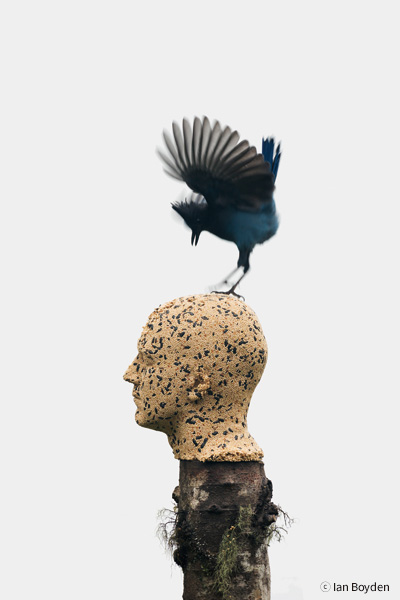
최근 작곡가 그리고 예술감독이자 무대감독인 세실리아 김희정 교수가 거대한 프로젝트를 통해 이 모든 것을 해냈다. ‘생각하는 손’이라는 이름의 작품으로, 김 교수와 프로젝트 팀은 한국의 무형문화재인 매듭 묶기와 달항아리에 생명력을 불어넣었다. 과정을 실시간으로 시연하고, 현대무용과 전통무용, 녹음된 인터뷰, 신작 및 전통음악, 조명 디자인을 통해 동시에 무형문화재를 재해석하고 확대했다. 무대 위에서 작품 '생각하는 손'의 작은 부분은 마치 손 자체가 꿈을 꾸고 있는 것처럼 실물 크기가 된다. 미디어와 형식을 세심하게 겹겹이 쌓은 김 교수의 작품은 가을 베를린에 도착해 거기서부터 우주로 파문을 일으키며 베를린을 뒤집어 놓을 것이 분명하다.
김 교수의 '생각하는 손'과 같은 세계적 수준의 컨템퍼러리 프로젝트가 계속해서 경외감을 불러일으키고, 국립극장의 창작 작업이 계속해서 영감을 주기 위해서는 개별 예술가와 예술 기관의 노력을 넘어 지속적인 국가적 지원이 필요하다. 진정으로 지속 가능하기 위해선 한국의 다양하고 활기찬 문화 생태가 다음 세대의 마음에 어린 나이부터 자리를 잡아야 한다. 젊은이들이 접해 보지 못한 미적 경험을 사랑하게 될 것이라고 기대할 수는 없다.
문화적으로 융성하는 미래는 비단 멋진 생각일 뿐 아니라 국가의 지속가능성을 담보하는 데 필수적이다. 내 고향의 빙하처럼 소중한 전통 예술도 한번 없어지면 영원히 사라질 것이다.
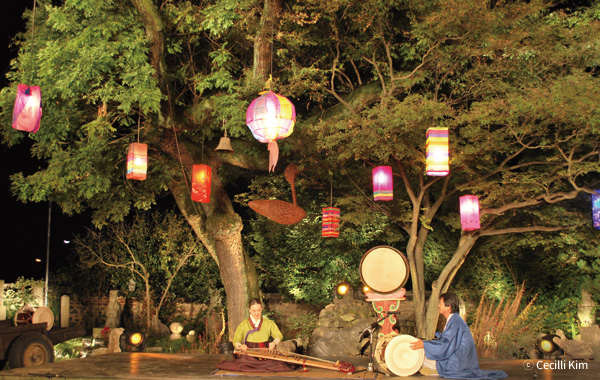

If you have thought of sustainability in terms of the ecology of our habitat and the effects of our actions on that ecology—e.g., polluted drinking water, “fine dust,” warming oceans, beetle-infested forests, species extinction—you are not alone. But sustainability only is something we aspire to at the more micro levels of our existence, too—like in our careers, relationships, and physical health.
Similarly, the cultural choices we make every day determine the long-term resilience of our personal and national identities. When our listening habits reach back no farther than last year’s K-pop Hot 100, once long-running roots become severed and unable to deliver the cultural nutrients so important to a person’s, and a people’s, identity.
The American visual artist and poet Ian Boyden writes that, while our environment is often considered a “reflection of self,” the relationship between us and our surroundings is much more intertwined. “The environment and self are inseparable,” he writes. “We are our environment. What we do to the environment, we do to ourselves.” In the same way, each one of us is our cultural environment—what we take in is who we are destined to be—as a person and as a people.
In recent years, Korea’s traditional music world has celebrated the 100-year birth anniversaries of two of the first Intangible Cultural Assets of the traditional genres I have been studying for the past 30 years. The gayageum byeongchang master PAK Gwihui (朴貴姬) was born in 1921, and SEONG Geum’yeon (成錦鳶), the renowned gayageum sanjo composer and player, was born in 1923. While I never had the opportunity to meet SEONG Geum’yeon in person, I did have the good fortune to see PAK Gwihui perform at the National Gugak Center in the early 1990s with her students AHN Sook Sun and KANG Jeong Suk, both now Intangible Cultural Assets themselves.
What I remember about the concert is that the atmosphere in the hall was electrifying, with audience members shouting out to the players on stage. Having been here only a short while at the time, I didn’t fully understand what was happening. But I knew for certain I wanted to be part of it. Already here on a scholarship from the Center to study gayageum, the next day I asked that byeongchang be added to my program of study. When I first came to Korea in the early 1990s, many gugak concerts were like PAK Gwihui’s, especially in the country’s southwest. There, listeners and performers seemed to join as one in experiencing the music. It was local and familiar. The entire audience would sing along with the performers, shouting out chuimse—words of encouragement—in sync with gayageum byeongchang’s lively rhythm patterns, which the audience knew as well as the complicated Sino-Korean words to the songs.

Having myself been brought up to sit silent and still during western classical music concerts, I would jump in my seat, looking for the perpetrator every time someone near me shouted “Right On!” (얼씨구!) It was when I finally had the opportunity to sit on the stage myself that I could feel the energy that such encouragement provides, especially when offered by teachers. Chuimse are the seeds of the “welling joy” of heung.
In contrast, concerts these days, even in Jeolla Provence, are strangely quiet—the cultural equivalent of American writer Rachel Carson’s Silent Spring, wherein the intrusion of pesticides silenced the birds’ singing around the author’s home. People are afraid to join in—to “do it wrong." They don’t know where to come in. The music is no longer close to them. At the most recent concert I attended, it wasn’t until the encore that the students joined in with chuimse for, to quote a lyric, a “short moment of spring” (一片春 | 일편춘).

One of the stories from China best known among those who study music in East Asia is that of Bó yá (伯牙) and ZHONG Ziqi (鍾子期) in the Daoist Book of Liezi (列子) (often quoted by Zhuangzi), from the Warring States “Spring and Autumn” period (approximately 771 to 476 BC). The tale, as reprinted in the Shen Qi Mi Pu (神奇秘譜, lit. “the mysterious and marvelous qin score”) is simple and short: Bó yá was good at playing the qin. Zhong Ziqi was good at to listening to the qin. When Bó yá’s will lay in [describing] high mountains in his playing, Zhong Ziqi would say, “How towering, like Mount Tai!” When Bó yá’s will lay in [describing] flowing water in his playing, Zhong Ziqi would say, “How vast are the rivers and oceans!” Whatever Bó yá thought of [as he played] Ziqi would never fail to understand. Bó yá said, “Amazing! Your heart and mine are the same!” When Ziqi died, Bó yá broke [his] strings and vowed never to play again.
This story is so famous in China (and was at one time in Korea) that it has been assimilated into a common euphemism for ideal friendship: zhiyin in Chinese or jieum in Korean (知音 지음)— “to know the sound or music.” In Korea, a more local phrase with a similar meaning is “famous singer by ear” (귀名唱), meaning someone who knows what good music sounds like but cannot necessarily produce it on their own. It is becoming hard to find this type of precious, though somewhat intimidating, audience member—the kind who genuinely appreciates the genius of a player’s precise manipulation of the bent decay of a note or the nuances of the tug-of-war between the gayageum and janggu (hourglass drum); the listener who sheds a tear at the interpretation of the minor-sounding gyemyeon mode and ascends with a pansori singer to the summit of a lofty mountain of sound to view the city below.
With the strings that once tied the regular population of listeners to their cultural lineage having long since been cut, these days it is not unusual for a player to look out over an audience and see people scrolling through their cell phones, faces aglow—an assemblage of ghosts listening only for the liberating signal of the performer’s closing note.
Today, we students of traditional Korean music and our teachers are, for the most part, left to converse amongst ourselves. We pluck on together on the small patch of verdant cultural land—a refugium— not yet flooded by modern media. Brought up in a K-pop soundscape, each year in my gugak university class, fewer and fewer students have ever heard of sanjo or can come up with the bare bones of a pansori story. And it’s not just a problem for gugak. After three years of COVID-19, very few have ever been to a live concert at all.
In one self-portrait sculpture project, Ian Boyden molded multiple shapes of his own head out of a variety of organic material like birdseed to initiate the disintegration of self, intended to be completed by birds, bears, fish, etc., as they carried pieces of him away. The old Joseon Confucians also wrote of this “anthropocosmic” rippling of self out into the universe, seeing ritual music as a device for self-cultivation and expansion, a force for social stability, a political tool, and a medium of communion between man, nature, and the supernatural.

One recent work that does all these things is the grand project of composer, artistic director, stage director, and professor Cecilia Heejeong KIM. Titled “Thinking Hands” (생각하는 손), her and her team’s production brings to life Korea’s Intangible Cultural Assets for Knot Tying and Moon Jars through live demonstration of processes, reinterpreted and magnified simultaneously through contemporary and traditional dance, recorded interview, new and traditional music, and lighting design. The minutia of the work of the on-stage “thinking hands” becomes life-sized, as if the hands themselves were dreaming. A meticulous layering of media and forms, KIM’s work is sure to turn Berlin upside down when it arrives there in the autumn and as it ripples out into the universe from there.
For contemporary world-class projects like KIM’s “Thinking Hands” to continue to awe and the creative work of the National Theatre to continue to inspire will require continued national vigilance beyond the efforts of individual artists and arts institutions. To be truly sustainable, Korea’s diverse and vibrant cultural ecology must come to occupy a place in the hearts of upcoming generations beginning at an early age. We cannot expect young people to grow to love an aesthetic experience to which they have had little or no exposure.
A thriving cultural future is not just a nice idea but an essential aspect of national sustainability. Like the glacier in my hometown, once a precious traditional art form is gone, it is gone forever.

Translator. Moony Choi
월간지 '월간 국립극장' 뉴스레터 구독 신청
뉴스레터 구독은 홈페이지 회원 가입 시 신청 가능하며, 다양한 국립극장 소식을 함께 받아보실 수 있습니다.
또는 카카오톡 채널을 통해 편리하게 '월간 국립극장' 뉴스레터를 받아보세요.
※회원가입 시 이메일 수신 동의 필요 (기존회원인 경우 회원정보수정 > 고객서비스 > 메일링 수신 동의 선택)






